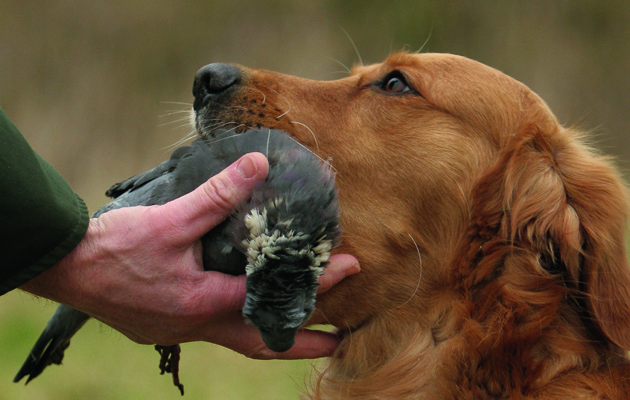Gundog pack mentality
Lez Graham looks at how early man’s wolf companions transformed into the modern shooter’s faithful friend.

In the past, man used dogs to help him hunt for food and pelts for clothing, shelters and storage, whereas now, most hunting is done as a sport or enjoyable pastime. The way we view and use our dogs has changed dramatically over these long years, but just how much has the modern gundog moved away from that tenacious hunter?
Early hunting dogs
When we first adopted the wolf as our companion, hunting primarily took the form of digging pits, laying traps and chasing animals over the edge of cliffs. Faster wolves would have been used to chase the animals, whereas the slower ‘steadier’ types would be used to point at game on the ground, giving the hunters a chance to throw nets over prey.
The wolves would have been given their part of the spoils once the hunter had taken the pieces that he wanted for the group, but the wolf would have known in no uncertain terms who the meat belonged to.
Exploiting instincts
This early blossoming relationship between man and wolf would have suited both species well. Both were social predators, who lived in family units and hunted in co-operative groups for the good of the majority.
In the same way that human hunters provided for their family, so too would the wolf provide for its pack. The youngsters would be left at the den area along with an allocated ‘nanny’ to ensure they were safe or didn’t try to follow the hunt. The hunters would then return with meat, either by carrying it in their mouths or, as was more common, in their stomachs, regurgitating it upon return or demand.
Just as ‘the pack’ is central for the wolf, so too is it for the dog, more so for the early dog, which would have been ‘tame’ but not domesticated. Being part of a hunting party (rather than leading the hunt) would have tapped into the early dogs’ instinct to follow, ensuring that the kill was brought back to the pack leader, who would get to choose whether or not they ate first.
It is this inherent behaviour of bringing the spoils back and deferring to the leader that makes dogs good hunting companions.
Form or function?
As man’s hunting prowess developed with the help of his new hunting companion, he would have found ways of exploiting the dogs’ innate behaviours and no doubt traded stories with others who also had hunting dogs. I can almost hear the banter between hunters, boasting of a dog that stalks and holds position at game while the hunter catches up and can throw a net. Another hunter may have wanted one that did the same, and so breeding for function would have started almost from the time the dog first adopted us.
As part of breeding for specialised skills, the look of the dog would have also changed. So let’s say you wanted a dog that could work in forested areas, you would look for shorter-legged, short-backed dogs and wouldn’t be breeding from taller rangy dogs. Over a short space of time a ‘look’ would be established and as we bred for function, the form would have followed, in turn ‘feeding’ the function.
By looking at a dog’s conformation, you can pretty much tell where its strengths lie. For example, when a spaniel (or bloodhound) puts its head down, the ears fall forward and create a funnel for the scent to go straight up the dog’s nose, which is why they can become very ‘blinkered’ very quickly as anything outside of the nose ceases to exist to them.
As a behaviourist I’m always surprised, although I shouldn’t be, that people buy dogs because they’re the fashionable working cocker or a cute Jack Russell and then rehome them because they have no recall due to the dog hunting all of the time or barking non-stop. Well yes, we did breed them to hunt and we did breed them to bark – a silent Jack Russell working underground wouldn’t last very long if it got stuck in a tunnel!

Even our smallest dogs, such as this wirehaired Dachsund, can trace their heritage back to the grey wolf.
The instinctual drift
Whether breeding for function or breeding for form, the beginning was the same – the grey wolf. Whether tweaking and tinkering with hunting ability, retrieving ability, speed, agility, steadiness, short coat, long coat or coat colour, the blueprint of our gundogs’ instinctive behaviour is from a social predator that thrives in a hierarchical environment.
Those times when things unravel with our dogs it’s generally down to a number of factors – a lack of training, a lack of boundaries, inconsistent handling, an element of instinctive behaviour, or a combination thereof.
When you see a gundog bury its retrieve, whether that’s game or a dummy, it’s harking back to that instinctive behaviour of creating a food cache for later retrieval and when instinct takes over, it’s classed as the instinctual drift. This is seen regularly in parks where dog owners are desperately trying to lure their dog back to them with a bit of chicken, when all the dog wants to do is chase the deer. Unless you’ve trained the dog to a high level of recall, chasing the deer will win pretty much every time as the dog ‘drifts’ towards its predatory ‘instinct’.










